If you have a comic or you are an illustrator, at some point you might want to give merchandise a try.
Not only selling your own goodies will potentially allow you to create a new income stream, but it will enable you to expand your artistic universe by appealing to new audiences.
Here’s the result of my research about what possibilities there are nowadays for creators to make and sell merchandise online and offline.
It’s obviously impossible for me to know each and every option available so, as usual, if you have some precious information that you want to share with the world please write it in the comments section.
WHEN IS THE BEST MOMENT TO START DOING MERCH?
This is a question I have seen all over the web, over and over again.
In my case I just started thinking about selling goods a couple of weeks ago and I’m about to celebrate my webcomics’ second anniversary.
There is no right answer here, but for sure there are some better questions, like:
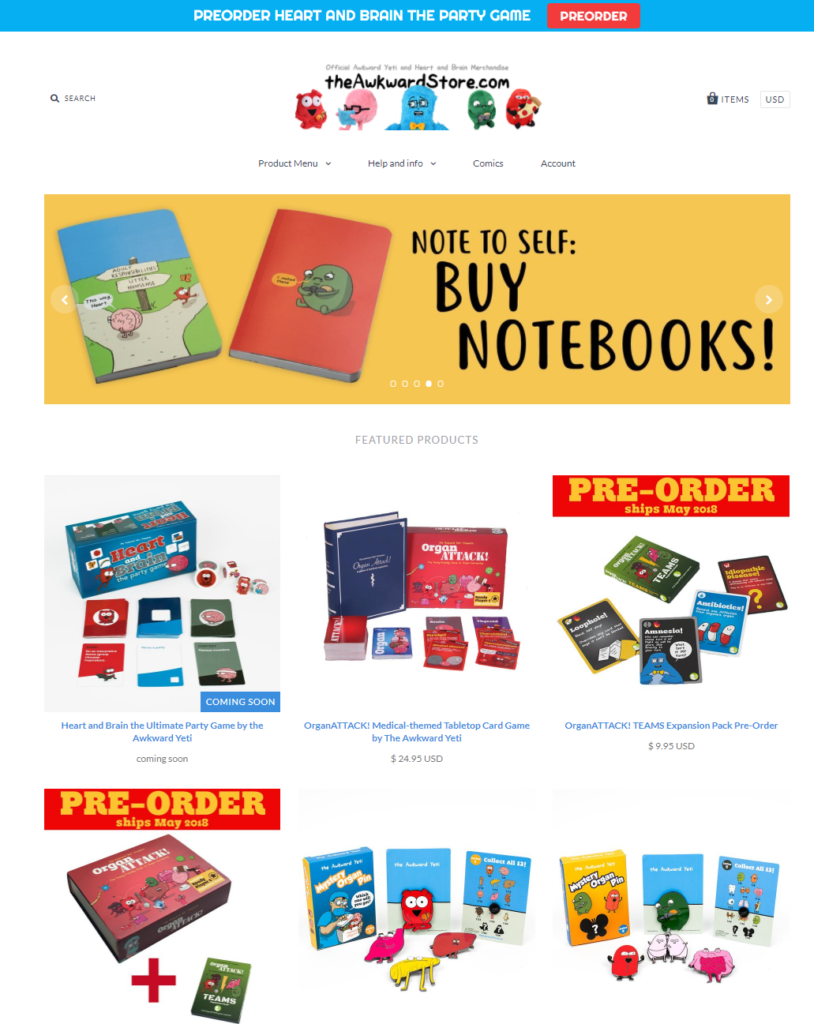
– what do you want to make merch for and why do you want to make it (what is your goal)?
– how much time do you have at your disposal?
– is your audience interested in your merch?
As you can see I voluntarely avoided the ‘is my audience big enough‘ question.
The reason why is that you don’t need to be a famous artists to do merch. You might even want to become a t-shirt designer without having a comic or an Instagram account with your illustrations. Obviously having a huge following on social media or any other platform will help you with the promotion of your merch, but the way you do promotion depends on many factors and your popularity online is only one of them.
In my case the most important element to take into consideration was TIME.
Do I have enough time:
– to make some research before throwing myself into the merch business?
– to produce new material to make my merch interesting?
– to set up a shop and then to promote it?
As soon as the answers were positive I started moving.
[su_box title=”TO SUM UP” box_color=”#e98b41″ radius=”1″] 1) Ask yourself why you want to do it and set a clear goal
2) Ask yourself if you have the resources (mainly the time) and the stamina to go through with it
3) Go open your shop, cause that is the right time to do it.[/su_box]
WHERE CAN I SELL ARTIST MERCHANDISE?
In order to choose the right way to produce and sell your merch there are a couple of elements to you need to take into account:
– TIME: how time consuming the production/budgeting/promotion of your goods is going to be
– MONEY: how much money do you need for the initial investment and how large your margin of profit will be
– FLEXIBILITY/PURPOSE: what do you need the merch for and how many of your purposes the platform can fulfil
[su_tabs][su_tab title=”PODs (PRINT ON DEMAND) or DROPSHIP” disabled=”no” anchor=”” url=”” target=”blank” class=””]– time / – money / – flexibility
The easiest solution to make goodies are POD (print on demand) platforms.
These are websites that allow you to upload a jpeg/png file of your design and to sell it right away in the form of the goodie (tshirt/pillow/mug/etc.) of your choice, as they take care of all the manifacturing, logistics and financial aspects of each transaction. The products are ‘on demand’ and therefore they are put into production only when a customer makes a purchase.
The initial investiment on your side is ZERO: uploading a design on these platforms is free and you don’t need to do anything else. There’s no stock therefore there’s no initial investment and no warehousing. All the charges of the platforms (included shipping) are included in the final price that the customer is going to pay.
As you can imagine, all this comfort comes at a high cost and profits are pretty low for this type of solution. Also, you have to keep in mind that even if you make, let’s say, 4 dollars on every t-shirt you sell, you will still have to pay the income taxe over it (while the sale taxes are paid by the platform). For some countries you’ll also be required to have a VAT number (I think UK and Australia, but please double check it).
When I first started researching PODs I focused on 3 factors: 1) quality of the merch, 2) copyright policy 3) margins of profit. Another good point that I’ve found in the forums concerns 4) customer care.
So make sure to find the ‘terms of service/policies’ and the ‘artist margins/base prices’ pages of every website before accepting anything without reading. These pages are often hard to find and complicated to read. Here’s some good reading you can do for the most famous POD platforms around:
- Rebubble terms of service / copyright policy – Redbubble artists margins / base prices
- Society6 terms of service / copyright policy – Society6 artists margins / base prices
- Teepublic terms of service / copyright policy – Teepublic artists margins / base prices
- Bigcartel terms of service / copyright policy – Bigcartel artists margins / base prices
If you want to have a complete list and a comparison between PODs platforms I recommend the airtable made by Placeit that you can find at this address https://bit.ly/2HE8c73
You can use these websites if you want to sell to your customers worldwide and generate a passive income. Advertising your products usually is up to you, even if some platforms might push your merch if it sells good or if they run a special promotion.
Last but not least: the licence for any of those PODs should never be exclusive: you keep all the rights of your designs and therefore you can upload them anywhere else. Many artists sell their creations through many platforms to maximize their profits.
Concerning the flexibility part, with this solutions you can’t really make stocks of your merch for yourself to sell at conventions, as the prices are too high. Maybe the fact that Amazon is entering the POD business will be a game changer, but so far memberships are limited. You can still try and get in touch with them here: https://merch.amazon.com/landing
Prices usually have a fix range and the type of products you can make are also limited to the availability on the platform (apart from some ‘classics’ each platform has its own goods). Some other limitations concern the way you can sell your products (for example you can’t always sell products as a kit) and the way your eshop is displayed. Make sure you pick a platform that satisfy your criteria concerning the type of goods you want to make and don’t forget to take quality into account (webcomics forums and groups are your friends!).
[/su_tab] [su_tab title=”FULFILMENT COMPANIES” disabled=”no” anchor=”” url=”” target=”blank” class=””] ± time/ ± money/± flexibility
If you’re looking for an intermediate solution that will demand a little more of your time, a small investment but that will allow you to expand your margins and have more flexibility, you can opt for a fulfiment service on demand.
The idea is that you get rid of the third party (the POD platform) and you go straight to a factory that makes goods. Keep in mind this is still a service ON DEMAND (can’t stress this enough), which means that the production of an item is triggered only by a purchase from a customer, so you don’t have to pre-produce them and manage the stocks in order to sell.
This type of service is offered under the form of a plugin. Which means you’ll need your own shop. If you’re not afraid of some extra work there are open-source solutions such as Magento and Woocommerce that allow you to build your own e-shop for FREE (which means you don’t pay the licence for using them, but you’ll still need to pay the hosting service you’re gonna build them on).
If you don’t want to go through the hassle of building your own website from A to Z you have plenty of e-commerce and marketplace solutions that will offer you templates to personalize with a minimum effort.
In order to calculate the margins you’re gonna need an extra effort as you’ll have to take into consideration also the fees charged by the platform you choose.
In any case your margins will be bigger than using a POD and you will have more flexibility concerning the type of items you can choose, the way you display them in your boutique and the prices you apply.
Some example of fulfilment companies are:
Printful in particular is compatible with most ecommerce solutions out there, from Woocommerce to Shopify to Etsy or Amazon. While the other 3 have a more limited choice of integrated solutions.
You also wanna check into where the warehouse is. For ex. if the fulfilment company has a warehouse in your country (or at least in the same continent) it’s likely that you’re gonna be able to reduce both shipping fees and delays.
Finally, consider also their catalogue: if you’re really keen into making a particular item but the platform doesn’t support it you’ll be forced to add another option in order to offer it to your customers. Printful is the only one who offers a warehousing service that allows you to stock merch from bulk orders and let them manage the fulfilment for both on-demand and indipendently manufactured items.
[/su_tab] [su_tab title=”WHOLESALE + ECOMMERCE (SELF FULFILLMENT)” disabled=”no” anchor=”” url=”” target=”blank” class=””]+ time/ + money/ + flexibility
The most complicated solution is obviously managing the chain from A to Z.
Which means you outsource the production of your merch to a manifacturer, you manage the logistics aspects (provisions/shipping/returns/customer care) and you build and manage your own e-shop, like we saw for the fulfilment solution (see the tab ‘FULFILMENT COMPANIES’).
This solution allows you to have full control on the type of goodies you make, their quality and their prices. The most important thing is to find a trusted a manufacturer and work with it in order to make the best product you can.
Then you’ll have to learn how to manage your product provisions and have a place to store them. You will also have to find a reliable shipping service and negociate your prices.
I think that a great advantage of building your own ecommerce is the fact that you can place bulk orders at a base price and sell a part of them online and then keep the other for direct sales (for ex. at conventions) for a higer profit.
Some artists go as far as making their own merch by themselves. There are many DIY videos on Youtube explaining how to make stickers or pins at home and how to create nice packaging.
I’m not gonna list manifacturers or shipping services as there are so many online that you can easily get lost. Also, prices and advantages are very different in each country.
I’ve worked for a company who used to use Alibaba to find manifacturers for the company’s branded merch. It’s a long and complicated process, but the good thing is that usually manifacturers send you a free sample before starting the production so you can order many of them from different manifacturers and compare them for free.
Here is a small comparison chart of ecommerce solutions from the Printful website (click on it to enlarge):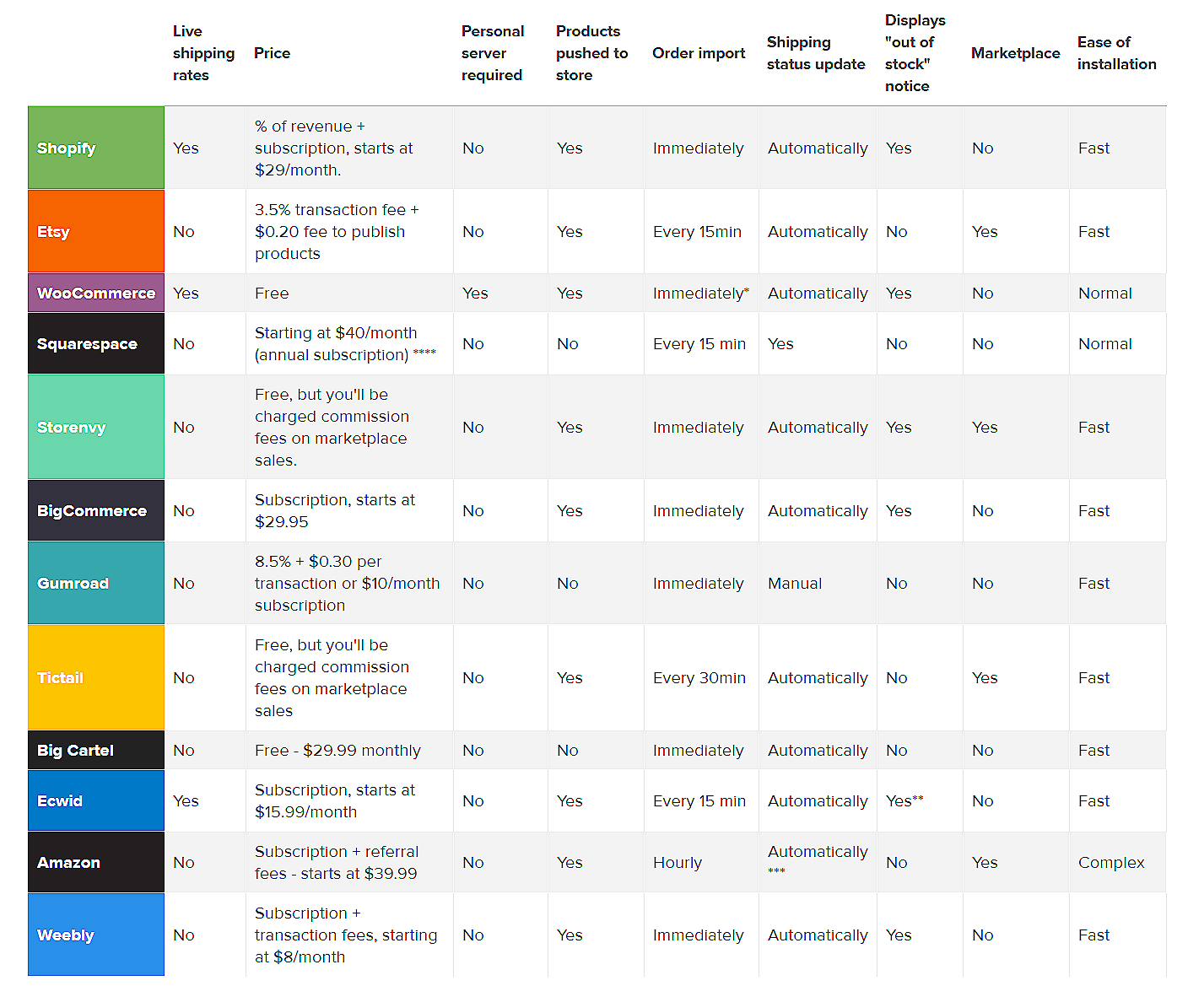 [/su_tab][/su_tabs]
[/su_tab][/su_tabs]
Reminder: don’t forget to put your name somewhere in your designs. I totally forgot about this part and I had to redo my shop entirely just to add it later.
FACEBOOK + INSTAGRAM
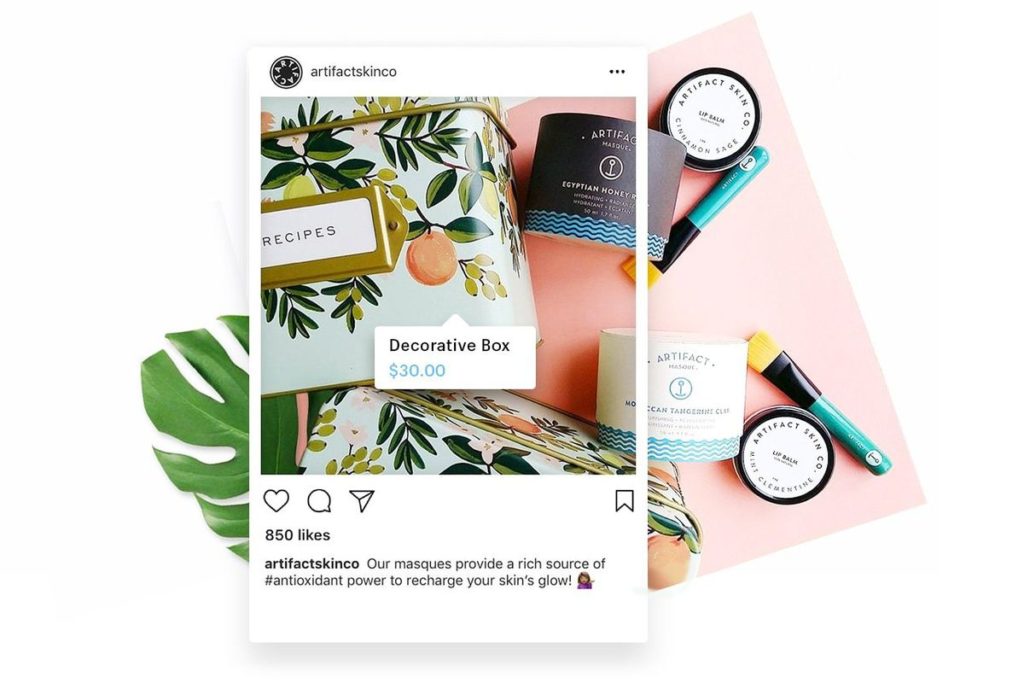
There’s a new option you can explore by using Facebook’s marketplace.
The idea is that either you connect your already existing shop (but only if it’s on Shopify or Bigcommerce, Facebook’s partners for this option) or you create one on your business’ page.
Then, if you’ve done everything right, Instagram should review your account and give you the option to use product tags on your posts. The result is a post that displays directly a product’s price and offer your visitors the possibility to click on the product they like and find themselves in your shop, ready to buy.
Here’s a step-by-step guide to implement such option.
WHAT ECOMMERCE SOLUTION IS THE MOST ADAPTED FOR COMICS ARTISTS?
Any of the platforms that I encountered during my research is tailored specifically for comics artists and therefore there’s no website that will let you, at the same time:
- make bulk orders of your goodies at a base price for yourself (to sell directly) and also sell on demand
- choose specific products that are adapted for comis creators (typically stickers, bookmarks, prints, tshirts, mugs, enamel pins, buttons and keychains)
- print comic books on demand (this is a whole different chapter, but I can tell you already that Amazon is the best player in the field)
Concerning the two most promintent webcomics publishers, Webtoon has started selling merch of its creators, but they handle the entire business and royalties are negociated by each artist indipendently, and Tapas has a deal with Amazon, but only for tshirts, and it doesn’t feel like many creators are aware of it or use it. If you wanna know more about it you can email them at content@tapasmedia.co with subject ‘Merchandise Program.
MERCH FOR COMIC ARTISTS
I just talked about what a typical set of custom products for comic artists would look like so let’s take a closer look.
If you sell online and on demand you don’t really need to bother about what type of products you might sell: it really depends on what the platform has to offer. Usually the item’s choice is pretty large on the majority of POD platforms and they all include the ‘classics’ such as tshirts, mugs and prints. Some PODs have some impressive apparel and home decor collections.
You can just go and have fun trying your designs with many differents goods and see what works best for you. It’s free!
When it comes to conventions it’s a bit harder. You need some planning.
There are soooo many manifacturers and prices and quality varies immensly.
The easiest way to find the manifacturer of your dreams is to have a tour on a webcomic group or forum (check them out in my article about introduction to webcomics) and to ask other people who do conventions. This will save you a lot of time and possibly money.
Keep in mind that I only have a direct experience with Stickermule, but during my research about merchandising I have found these names recurrently:
https://www.alibaba.com/ (this article will help you get started)
Some websites for quality t-shirt bulk orders:
https://www.spreadshirt.com/bulk-t-shirt-printing-C6918
https://www.printful.com/
Some websites for quality stickers:
https://www.stickermule.com/
Manufacturers for enamel pins:
http://truemetalworks.com/
https://www.madebycooper.co.uk/
http://www.nightowlsprint.com/services
https://www.pingamestrong.com/
Fridge magnets:
https://camaloon.com/
Badges/Buttons and everything else:
http://www.awesomemerchandise.com/
http://www.nightowlsprint.com/
Others:
https://www.thestudio.com/diy/
Note -> if you have a website to recommend for a specific type of item please write it in the comments, explaining what was your experience with them and why you recommend them
As usual, instead of asking yourself what type of merch do you want to make, I recommend to ask it to your readers.
You’ll be surprise about how responsive they’ll be 🙂
I haven’t done conventions as I live in France and make comics in English (a complicated deal), but I’ve heard that printed comics (collections or volumes) are always the best sellers.
Also, it’s very common to keep some small/light items (prints/postcards/stickers/bookmarks) at home, so you can use them for 101 comics marketing:
- Patreon rewards
- social media reward (‘the first 10 people who will tag their friends will get…)
- giveaways
HOW TO PROMOTE/SELL YOUR MERCH
This works exactly as for promoting your comics.
You can pay for ads (Facebook/Adwords/Instagram) or just promote your work by yourself through your social media profiles and your website.
Keep in mind that many POD platforms run ads and they might pick up your stuff for their promotions. Before choosing your platform try to see if they make ads, how many followers they have on social media and how often they promote their artists (and if they always promote the same people).
Smaller platforms might be more effective promoting their artists as there’s just less people to promote.
MY CONCLUSION ABOUT MERCH
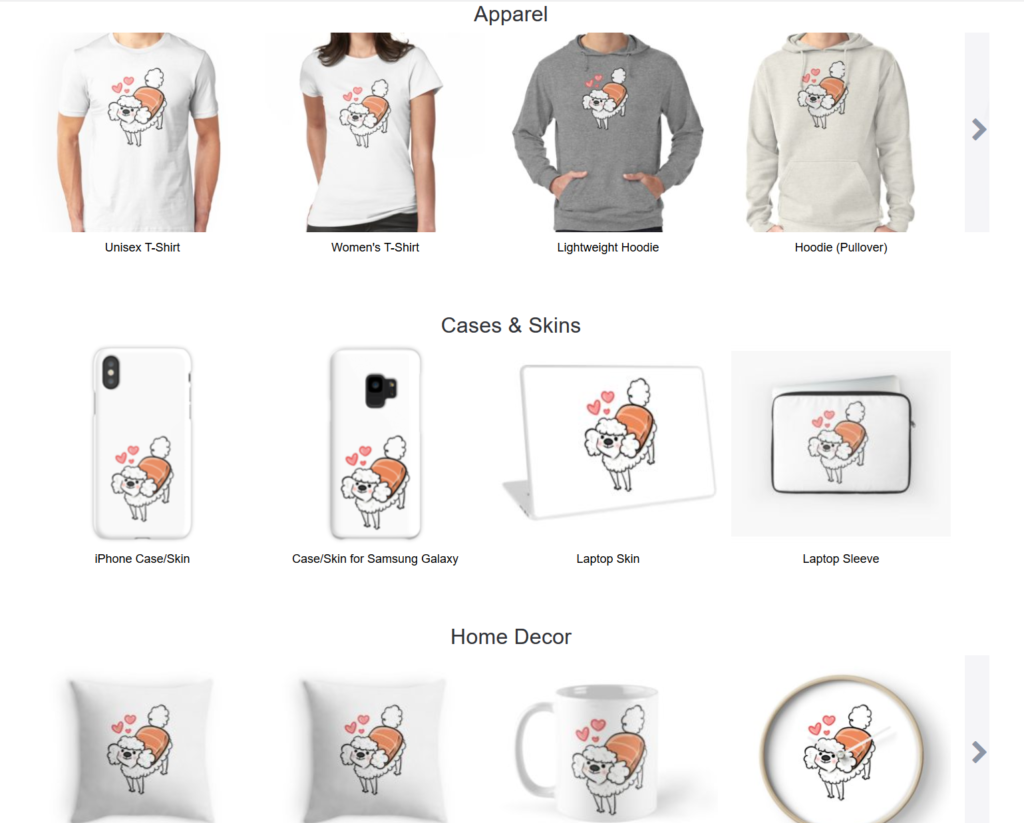 After spending 2 weeks reading and writing on forums about this topic my idea is that it has never been so easy, for a creator, to put up a business based on his/her own work.
After spending 2 weeks reading and writing on forums about this topic my idea is that it has never been so easy, for a creator, to put up a business based on his/her own work.
Whether if you are a business-savvy artist or a newbie you can always try to take your first steps into the merchandise universe thanks to PODs, with zero risk of losing your money and your time.
The only risk is to actually become very good at it and generate a passive income that, in the very precarious life of a comic creator, is always welcome.
You’ll find plenty of tutorials on Youtube and on the platform themselves on how to make the best out of your business and you’re definitely gonna have fun doing it, cause if you love what you do you will love it even more on a tshirt 🙂
Starting off with a POD, then moving on to a Fulfulment service and, once you’re really good and you have some data concerning your activity and money to invest, maybe setting up your own merch business.
I created a special series of illustration named ‘Pooshi‘ (poodle+sushi) inspired by my dog Kotopopi, which is also my mascotte.
I will defintely pull out a design inspired my comics (Millennials or AI), but for a start I preferred something original to inspire and motivate me even more.
What about you? What are your plans?
LEAVE A MESSAGE IN THE COMMENTS!
RESOURCES
There is an amazing website that has alreae done all the work you might possible do in comparing PODs. It’s called https://placeit.net/
I would also recommend this Youtube channel.
And some comparison between ecommerce platforms.

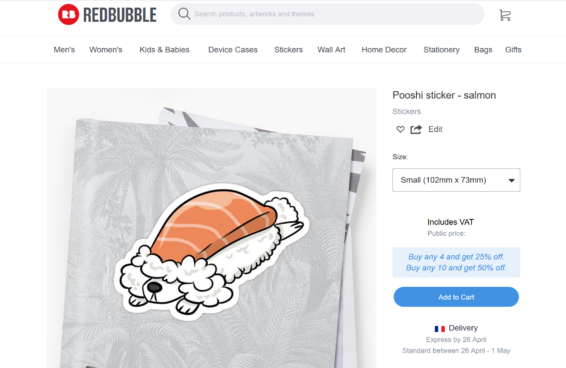
Pingback: “How to” webcomics in 2018 – PROMOTION – KOTOPOPI
Thank you for this info
I’m very grateful